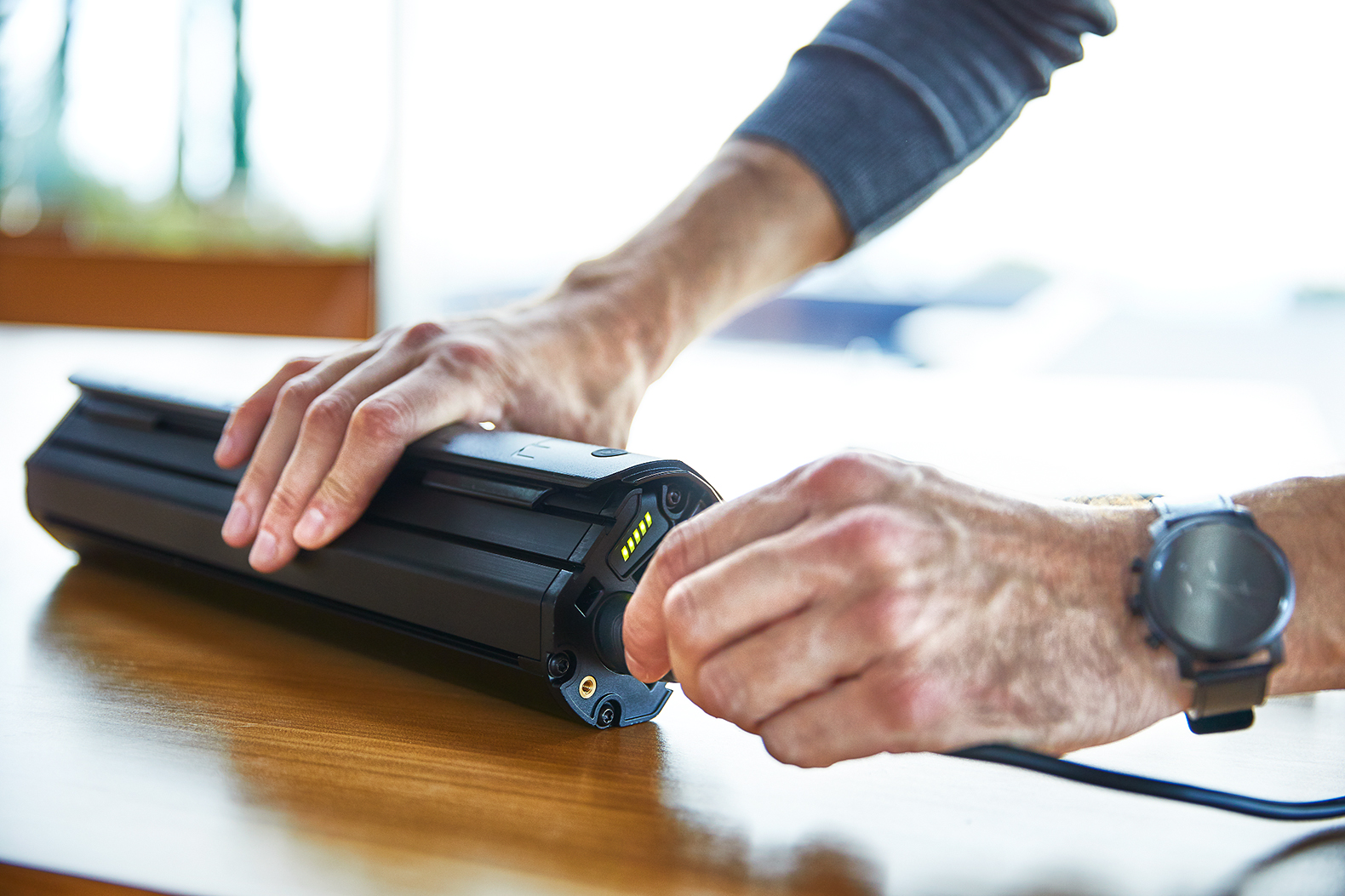How can I store my battery properly over winter and avoid a breakdown?
Here we are: winter has officially set in and you've swapped your electric-assist bike for public transport, which is more comfortable during the cold season! During these long winter months, your electric bike will probably be stored in your garage, your cellar or (for the lucky ones) in a corner of your garden, until the following spring.
When the warm weather and sunshine return, you'll probably want to enjoy a nice ride on your electric bike... And then disaster strikes! Your electric bike breaks down, the battery no longer lights up or it no longer takes a charge... But don't worry, Doctibike can tell you what you need to do to prolong the life of your battery, and therefore your electric bike, during the winter break. In this article, you'll find out how to store your lithium battery efficiently during the winter, in case you don't use it for a long time, and how to prevent your electric bike from breaking down in the spring!
It's important to store your electric bike battery in optimum conditions.
The battery is an essential part of your electric bike. And the proof is in the pricing : on average, the battery accounts for a third of the total price of a new electric bike... That's why it's essential to take great care of it, whether you're charging it, using it or storing it! As a relatively fragile product, lithium electric bike batteries are also sensitive to temperature variations (hot and cold).
Tip 1: To prolong the life of your electric battery, store it at room temperature, between 15°C and 30°C. According to the manufacturers, the ideal temperature is 15°C. Beware of the cold in winter: your battery doesn't take it well, and can lose up to 40% of its basic capacity as a result. For optimum storage, remove the battery from your electric bike and store it in a dry place, such as an indoor cupboard.
If you notice a loss of autonomy, you can opt to have your battery reconditioned by Doctibike. It's cheaper than buying a new battery and it's environmentally friendly, so you can give your battery a second life, just as it had in the early days. Reconditioning times are much shorter in winter.
I want to recondition my electric bike battery
Tip 2: If you use your electric bike in winter and want to recharge your battery directly after use in cold weather, we recommend that you wait about half an hour before recharging: this prevents the battery from suffering a thermal shock. Batteries don't take kindly to this!
It's important to charge your battery regularly, even if you're not using your bike.
Not using your electric bike for a long time? Then it's vital to recharge the battery regularly! Most Lithium-Ion batteries cannot withstand being completely discharged: this phenomenon, known as "deep discharge", irreversibly damages the energy cells contained in your battery. Once this stage has been reached, you will have to recondition your battery (in other words, replace all the energy cells in your battery) or buy a new battery, at a high price.
Tip 3: During winter, or any period of immobility, recharge your bicycle battery at least once a month. This considerably reduces the risk of deep discharge of your battery! Also remember to keep the charge level of your electric battery between 40% and 70% of its capacity when not in use. That way, there's no risk of your battery refusing to charge in the spring and your electric bike becoming unusable.
Tip 4: When you connect your battery to recharge it, make sure you connect it in the right order: first connect the charger to the battery, then to the wall socket. This avoids the phenomenon of electric arcing, which can be very harmful to batteries! The ideal solution, of course, is to remove the battery from the bike and take it with you indoors: at home or in the office.

What to do when Spring arrives?
Has your electric bike been out of action for a long time? Before getting on board your trusty electric steed, recharge the battery to 100% and test the various components of your electric bike, such as the brakes, tyre pressure, transmission, etc.

When you take your electric bike out again, if you don't follow the battery conservation steps, you may notice a loss of range. If this is the case, call a Doctibike expert on +33 (0)9 67 04 31 33, who will be able to find a rapid solution for you by diagnosing your electric battery.















